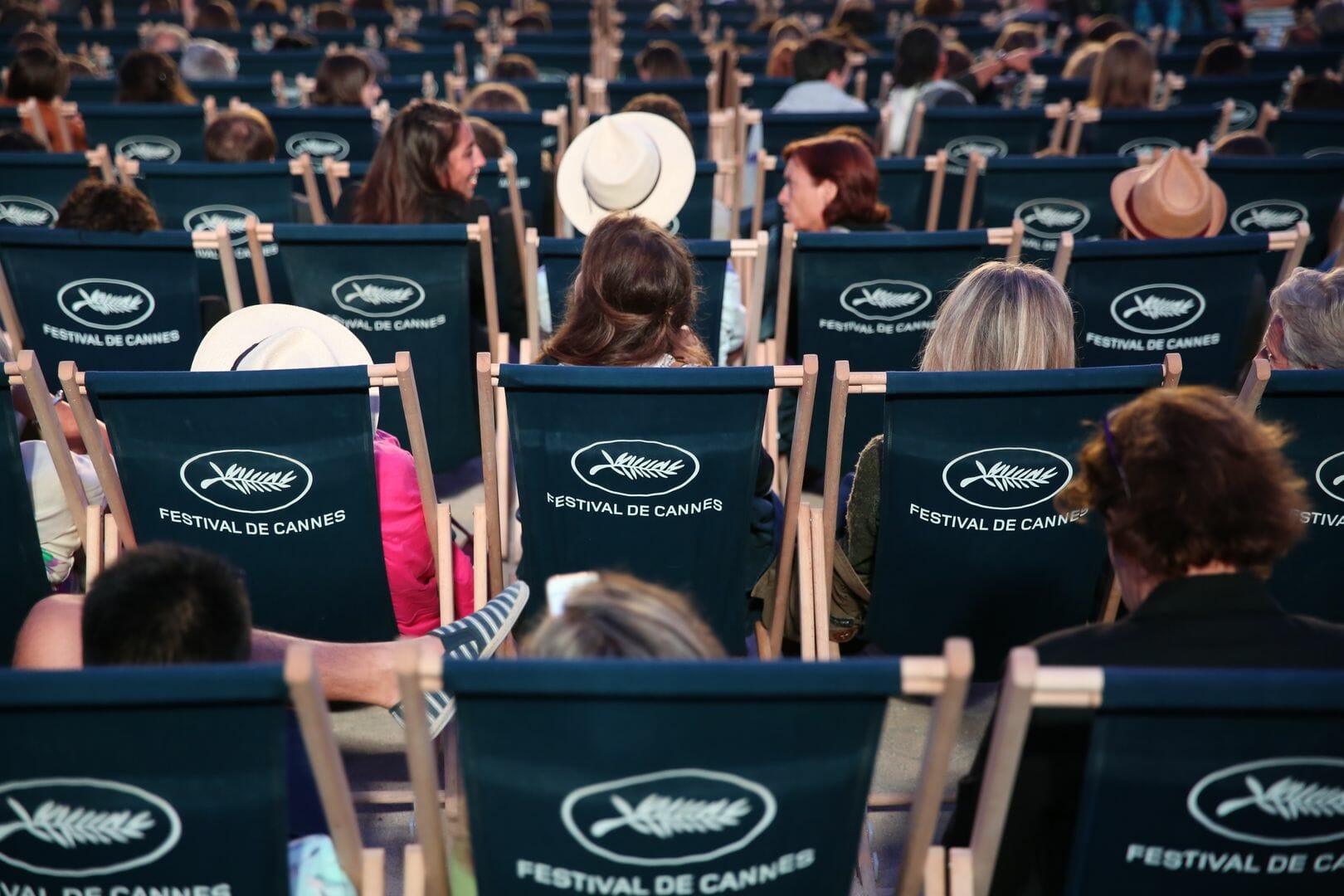
Asteroid City | Desert Encounters Between Romance and the Meaning of Life
Year
Runtime
Director
Main Cast
Cinematographer
Production Designer
Music by
Country
Format
Genre
Subgenre
Asteroid City, Wes Anderson‘s latest cinematic venture, is an eccentric work of art with dazzling palettes of color and a fast-paced story, featuring a cast of established and rising stars. We are witnessing a comedy drama crafted by one of the most recognizable contemporary filmmakers, when it comes to a distinctive visual style and other storytelling characteristics. And this movie is no exception. To the point that one wonders if the director has fallen victim of the burden of his own unique mannerisms and trademarks. This has now turned into something quite predictable for some viewers and critics, such as those at BBC or The Verge. For others, Asteroid City represents the quintessence of Anderson’s work, as it stands today after three decades of experimentation. He is consciously and meticulously doing what he does best.
The viewer boards a seductively designed two-story fantasy spaceship. The main narrative consists of polished scenes straight out of a glossy magazine. They show close-ups in soft pastel colors, intimate snippets of life in the play called Asteroid City. Then there is the second story, filmed in black and white, revealing the backstage of the same play. These two stories produce a consciously self-referential narrative that includes the events of the staging of a play and the making of the play itself. In this way, the director offers a reflection on his work and the influence of other art forms on his methods. Though the public may be afraid of getting lost in transit, the machinery is perfectly under control. Indeed, all the décor, the cast, and the lines seem to be supervised perfectly.
The movie takes the public on a journey to the final frontier: all eyes look up into infinite space. The narrative winks at all the popular myths that have spread over the centuries about the existence of extraterrestrials and the American government’s experiments around them. Asteroid City not only stimulates the retina, it feeds the brain with profound messages. A transcendental event disrupts the small and intimate routines that only the young seem to notice and act upon. Indeed, it alludes to burning questions that are relevant today, as they were yesterday, and as they will be tomorrow: who is out there? How do you give meaning to life? What comes next?
Wes Anderson co-wrote the story with Roman Coppola, son of acclaimed filmmaker Francis Ford Coppola. Asteroid City premiered at the 76th Cannes Film Festival and competed for the Palme d’Or.
Stargazers, Lovers, and Cowboys
A tiny, Technicolor desert town in the southwestern United States plays host to the Junior Stargazers Convention of 1955. Families, soldiers, and scientists gather around the spectacular and uncanny inventions of five gifted teenagers. Children and cowboys join the festivities when an alien crashes the party. It is in this context that war photographer Augie Steenbeck (Jason Schwartzman) and famous actress Midge Campbell (Scarlett Johansson) meet and embark on a short-lived romance.
Midge Campbell’s character looks like a typical tortured woman from Hitchcock‘s 1950s movies. With her hairstyle, Scarlett Johansson resembles Kim Novak‘s desperate Madeleine Elster in Vertigo (1958). Also, Midge’s performance in the bathroom is a nod to the iconic terrifying scene with Janet Leigh in Psycho (1960). This reference takes on even more depth when you consider that Johansson interpreted the role of Janet Leigh in the 2012 movie Hitchcock directed by Sacha Gervasi.
The iconic touch of Wes Anderson
As mentioned earlier, Wes Anderson’s cinema is undeniably recognizable by the color palette and the symmetrical compositions of his shots. He frequently mixes styles: brightly colored or grayscale scenes, some caricatured and others animated. This trend finds its epitome in his 2021 movie The French Dispatch. There are two visual styles in Asteroid City that complement and contrast each other.
The main story unfolds through wondrous pastel photography. Turquoise skies, yellow trains, and soft pastels hint at Anderson’s signature palette. The minimalist landscape highlights pink powder clouds floating on the horizon as Augie and Midge exchange confidences. The white hotel bungalows shade an oasis, illuminated by the small light bulbs. The crepuscular atmosphere sets the mood for the young scientist-dreamers to wonder about space.
Later, black-and-white scenes show “the host” (Bryan Cranston) on a TV show as he explains the process by which famed playwright Conrad Earp (Edward Norton) wrote and staged Asteroid City. What becomes clear is that the colored story is, in truth, a play. Thus, there is a two-tiered story, with the monochrome and colored parts unfolding alternately. However, a brief glitch can occur when the monochrome host unexpectedly appears in the colored play itself—an intentional glitch in the story that breaks the illusion of fiction.
A further common feature of Anderson’s work is the composition of the frames, which is thoughtfully designed through perspective and miniature. First, the crew designed the set entirely on a desert plain in Spain and parameterized the decor for the purposes of the movie. A pristine open space where production designer Adam Stockhausen carefully chose where to place cacti and artificial canyons. When it comes to visual effects, Anderson prefers to use old-fashioned techniques. The train and the spaceship are miniatures manufactured by Simon Weisse, who had previously worked with the director of The Grand Budapest Hotel.
Asteroid City echoes American cultural references
The two visual storylines mentioned above allow Anderson to make a comparison between the art of cinema and the art of theater. The visual clues indicate that these art forms are different. In addition, the black and white TV broadcast is filmed as if it were being viewed from a distance, limited to the confines of the stage. The cinematic shots, on the other hand, are close-ups of the actors’ faces, revealing subtle emotions. Anderson does not reject the world of theater, however; on the contrary, he acknowledges his significant connection to it.
The vivid cinematic scenes enter the intimacy of everyday life. Indeed, they recall American magazine covers, such as those of The Saturday Evening Post between 1920 and 1950. The platonic ideal of the yellow diner in Asteroid City, for example, echoes some of the work of American painter and illustrator Norman Rockwell made around that time, such as The Runaway or The Soda Jerk. Another related Post cover by Rockwell is Coming and Going, which celebrated the emerging post-World War II road-trip trend. Depicting a large, excited, and chaotic family, it is easy to imagine the Steenbeck family in the car with Augie, his son Woodrow (Jake Ryan), the three little sisters, and the grandfather (Tom Hanks). These images are candid scenes that transpire the utopian way of life that came with the booming material economy of the 1950s.
The black-and-white story, by contrast, pays tribute to the emblematic Broadway, now indistinguishable from American theater. Indeed, Anderson closely studied the movies of the 1950s and the new kind of acting brought about by Marlon Brando and James Dean. Significantly, the director paid close attention to how these actors took their talents from the theater to the big screen. Anderson confesses to IndieWire that he has always been sensitive to “the mystique of a backstage story and the theater, just the aura of it.” In one standout scene, the entire cast participates in a fervent improvisation workshop, effectively demonstrating the influence of theater.
Finally, Asteroid City‘s narrative follows a legacy of sci-fi movies about encounters with extraterrestrial beings that are shrouded in conspiracy theories. These include Spielberg‘s Close Encounter of the Third Kind (1977), Sonnenfeld‘s Men in Black (1997), Peli‘s Area 51 (2015), and the latest movie, Nope (2022) directed by Jordan Peele. When confronted with extraterrestrial life, the question on everyone’s lips is:
‘Are you friend or foe, or other?’
From the song by Montana and the Ranch Hands
From the weird planets come E.T. (1982) and Paul (2011). From the darkest corner of the universe comes the grim Alien. What about the others? Are they the ones you can fall in love with, like in Avatar? Or are these the beings that are completely indifferent to humanity and only come to catalog meteorites?
A train that runs like clockwork
When the scientists, soldiers, and apprentices team up, they set off an explosive chain reaction. Their intentions are laid out, pinned down to the locations of complicated roadmaps, and scheduled for a precise moment in time, down to the minute. Such mapped lines of action also appear in Anderson’s other works, such as the aforementioned The Grand Budapest Hotel or Fantastic Mr. Fox. All of this accuracy and care is another hallmark of Wes Anderson’s storytelling. Yet, as the story goes, the protagonists did not foresee every possible consequence. Even when everything seems planned, life seems to work in mysterious ways.
Moreover, actor Jeffrey Wright testifies that Anderson is very specific, notably in the architecture of the language chosen in his script. The wording leaves very little room for interpretation. Wright says that the director closely monitored the delivery of his speech. Meanwhile, Johansson hints at the complexity of the narrative and its meta-dimension. Indeed, she is an actress taking part in a play within a movie, as the actress Midge Campbell rehearses for a role. Ultimately, Cranston concludes that only Anderson knows what he has envisioned and that is fine. The actors trust the process and the director’s ability to tell a story.
But what is Asteroid City all about?
The movie uses satire to highlight the absurd parts of life. The alien is not the deus ex machina whose role is to give a happy ending to an unsolvable situation. Actually, most adults focus on small daily tasks without being bothered by the sudden awareness of possible extraterrestrial life. Only young Woodrow pushes for the philosophical implications of this disturbing event. Once again, youth seems to be at the forefront of the action in Anderson’s world. Arguably, the controlled narrative is a reassuring measure against an increasing tendency toward disorder, one interpretation of the second law of thermodynamics. For the performers in the cast of Asteroid City, there is no need to understand the whole picture. Some things in history are better left untold.
Tag
Buy a ☕ for Hypercritic









